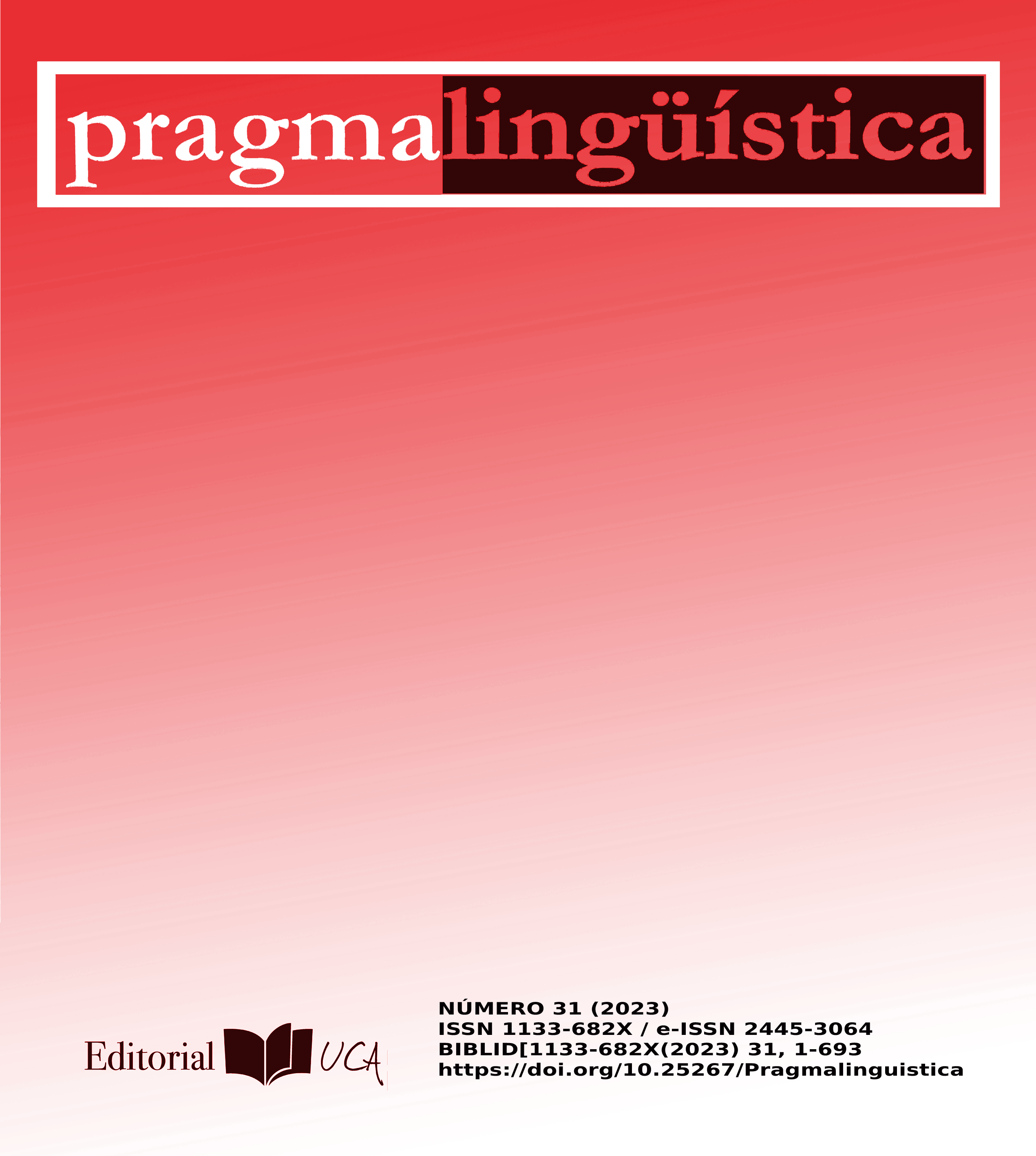Theoretical-quantitative analysis of the formal properties of hypocoristics in peninsular Spanish

DOI
https://doi.org/10.25267/Pragmalinguistica.2023.i31.12Info
Abstract
The process of forming hypocoristics (Fran, Isa) is difficult to systematize due to the formal and prosodic changes they undergo with respect to their bases. These are classified into two groups based on whether they maintain the initial syllable and are more formally faithful to the base (class A) or maintain the stressed syllable and have a greater presence of formal changes to obtain CV.CV syllables (class B). Our statistical analysis of an updated sample of 208 hypocoristics shows that the distribution of names in both classes is not random, with the number of syllables in the base being a determining factor. In addition, significant differences are observed based on gender, with female hypocoristics generally being more conservative than male hypocoristics. The appearance of palatal sounds is also higher in the latter, despite the fact that previous studies have linked this strategy to the formation of female hypocoristics.
Keywords
Downloads
How to Cite
License
Copyright (c) 2023 Bárbara Marqueta Gracia, Miguel Cañete Lairla

This work is licensed under a Creative Commons Attribution-NonCommercial-NoDerivatives 4.0 International License.
References
AMÓN, J. (2002): Estadística para psicólogos II (9ª ed.), Madrid: Pirámide.
BOYD-BOWMAN, P. (1955): “Cómo obra la fonética infantil en la formación de los hipocorísticos”, Nueva Revista de Filología Hispánica, 9(4), pp. 337-366. https://doi.org/10.24201/nrfh.v9i4.1297
COLINA, S. (1996): “Spanish truncation processes: the emergence of the unmarked”, Linguistics, 34, pp. 1199-1218. https://doi.org/10.1515/ling.1996.34.6.1199
DÍAZ ROJO, J. A. (2002): “El fonosimbolismo: ¿propiedad natural o convención cultural?”, Tonos digital: Revista electrónica de estudios filológicos, 3, pp. 3-26. Disponible en: https://digitum.um.es/digitum/handle/10201/40517 (Última consulta: 17/05/2023)
ESPINOSA, M. (2001): “De Alfonso a Poncho y de Esperanza a Lancha: los hipocorísticos”, Razón y Palabra, 21, feb-abr. Disponible en: http://www.razonypalabra.org.mx/anteriores/n21/21_mespinosa.html (Última consulta: 17/05/2023)
FERNÁNDEZ LEBORANS, M.ª J. (1999): “El nombre propio”, Bosque, I. y Demonte, V. (coords.), Gramática Descriptiva de la Lengua Española, Madrid: Espasa-Calpe, pp. 77-129.
FRÍAS NAVARRO, M. D., PASCUAL LLOBELL, J. y PÉREZ GARCIA, J. F. (2000): “Tamaño del efecto del tratamiento y significación estadística”, Psicothema, 12(2), pp. 236-240. Disponible en: https://www.psicothema.com/pdf/555.pdf (Última consulta: 17/05/2023).
JESPERSEN, O. (1933 [2010]): “Symbolic value of the vowel i”, Selected Writings of Otto Jespersen, Routledge Revivals, pp. 283-303.
HUALDE, J. I. (2014): Los sonidos del español, Cambridge: CUP. https://doi.org/10.1017/CBO9780511719943
KOCHETOV, A. y ALDERETE, J. (2011): “Patterns and scales of expressive palatalization”, Canadian Journal of Linguistics, 56, pp. 345-376. https://doi.org/10.1017/S0008413100002048
MARTÍNEZ-GIL, F. (2014): “Main phonological processes”, Hualde, J. I., Olarrea, A. y O’Rourke, E. (eds.), The Handbook of Hispanic Linguistics, Oxford: Blackwell, pp. 111-132. https://doi.org/10.1002/9781118228098.ch6
MCCARTHY, J. y PRINCE, A. (1994): “The emergence of the unmarked. Optimality in prosodic morphology”, Proceedings of the North East Linguistics Society, 24(18). Disponible en: https://scholarworks.umass.edu/cgi/viewcontent.cgi?article=1017&context=linguist_faculty_pubs (Última consulta: 17/05/2023)
NÚÑEZ-CEDEÑO, R. y MORALES-FRONT, A. (1999): Fonología generativa contemporánea de la lengua española, Washington D.C.: Georgetown University Press.
PIÑEROS, C. E. (2000): “Prosodic and segmental unmarkedness in Spanish truncation”, Linguistics, 38, pp. 63-98. https://doi.org/10.1515/ling.38.1.63
PRINCE, A. y SMOLENSKY, P. (2004): Optimality theory. Constraint Interaction in Generative Grammar, Londres: Blackwell. https://doi.org/10.1002/9780470759400
RAE y ASALE (2010): Nueva Gramática de la Lengua Española (Manual), Madrid: Espasa.
ROCA, I. y FELÍU, E. (2003): “Morphology in truncation: the role of the Spanish desinence”, Booij, G. y van Marle, J. (eds.), Yearbook of Morphology 2002, Dordrecht: Springer, pp. 187-243. https://doi.org/10.1007/0-306-48223-1_7
SANZ ÁLVAREZ, J. (2015): The Phonology and Morphology of Spanish Hypocoristics. Tesis de Máster. Tromsø: The Artic University of Norway.
URAWA, M. (1985): “Muestra de hipocorísticos en el español bogotano”, Thesaurus, 40(1), pp. 51-102.
WIESE, R. (2001): “Regular Morphology vs. Prosodic Morphology? The Case of Truncations in German”, Journal of Germanic Linguistics, 13, pp. 131-177. https://doi.org/10.1017/S1470542701032020






